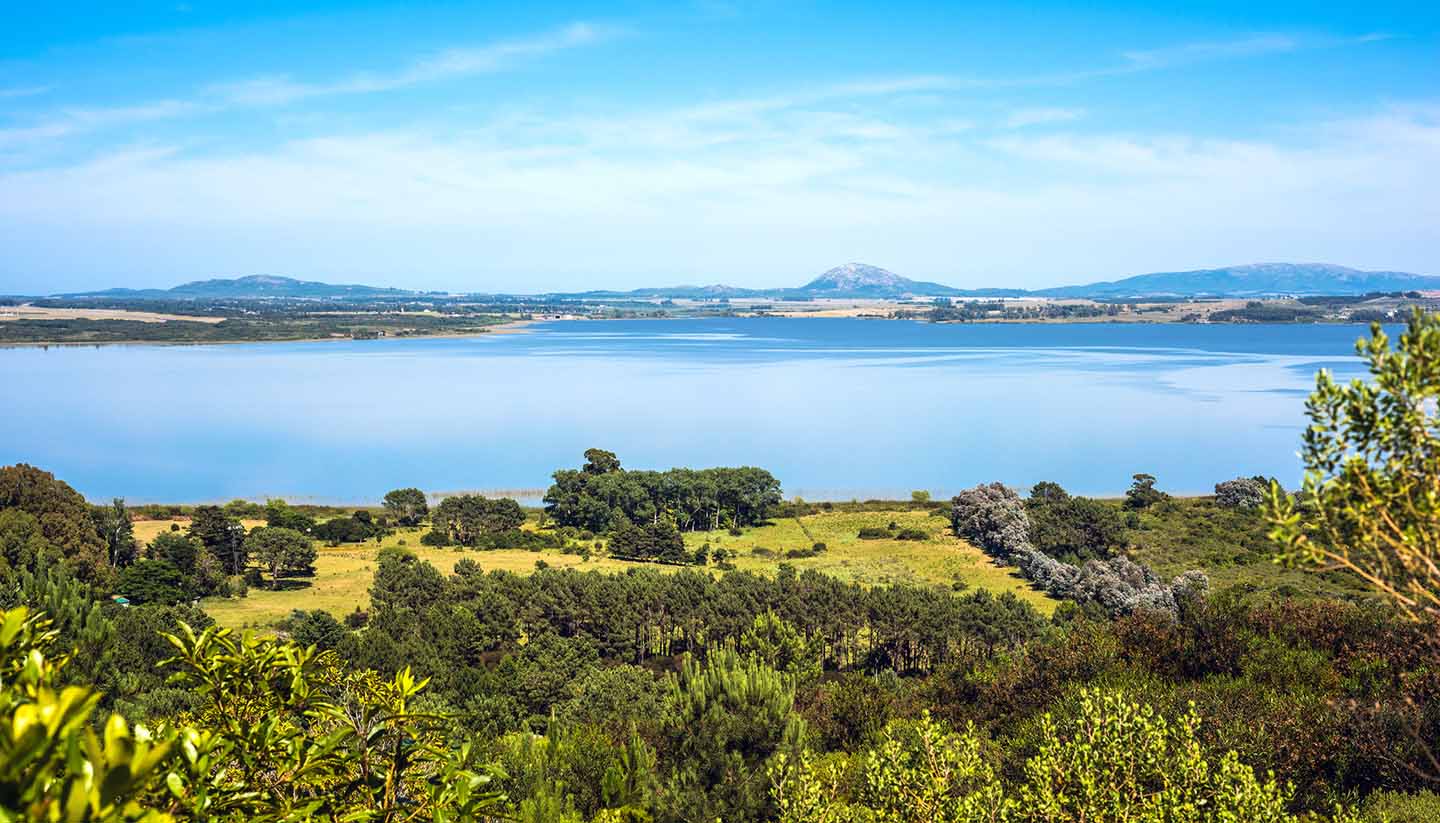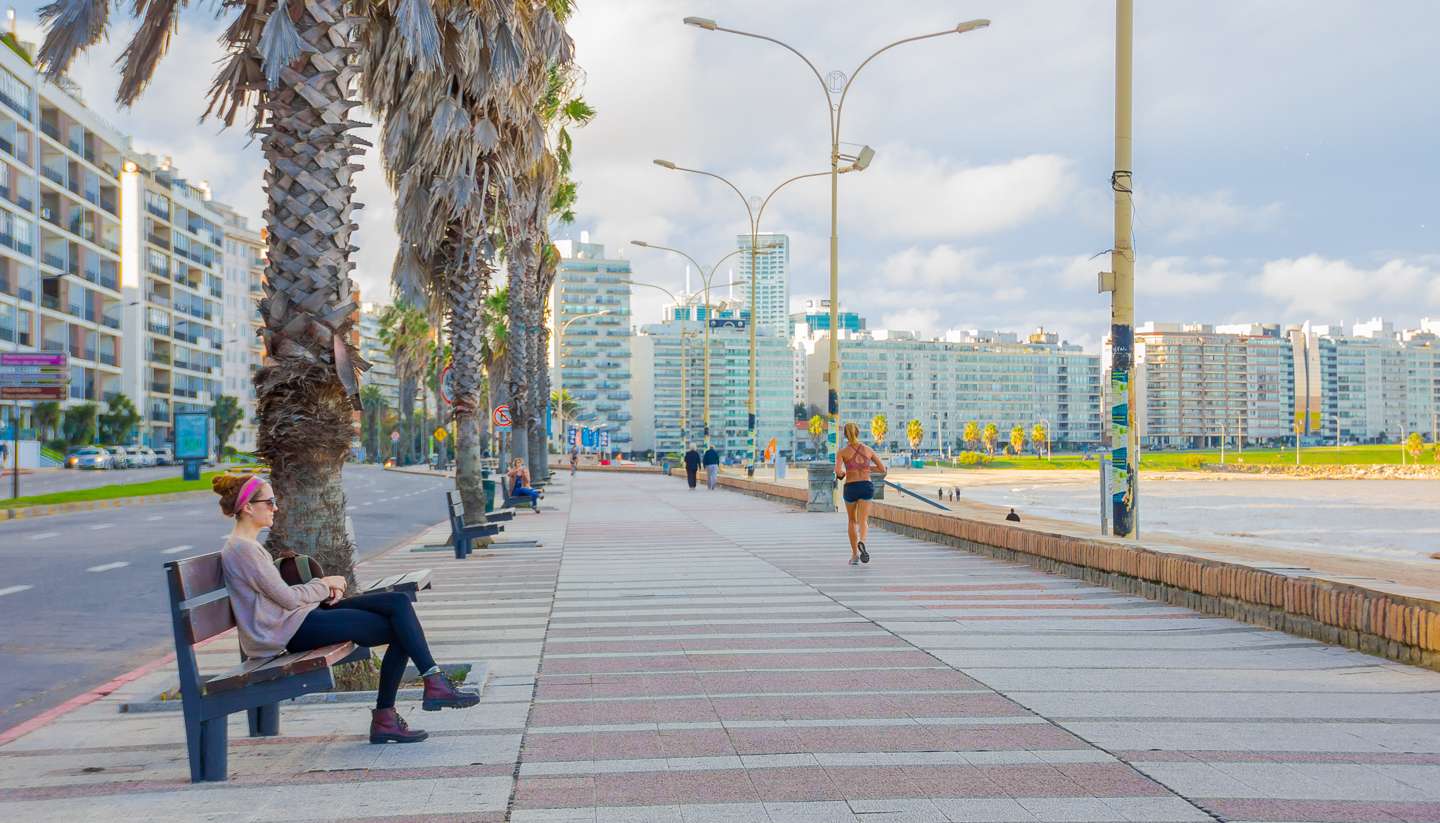Getting Around Uruguay
Air
Regularly scheduled commercial flights within Uruguay have been discontinued. Bus and rental car are the two best ways to get around the country.
Road
The main national routes, numbered 1 through 9, fan out from Montevideo like fingers of a hand. All are paved and well maintained, including some excellent sections of four-lane highway linking the capital to Colonia and Punta del Este. Secondary routes along the Río de la Plata, Río Uruguay and Atlantic Ocean are also of good quality. Travel elsewhere can be more challenging, often involving long sections of unpaved road.
Side of the road
RightRoad Quality
Road conditions vary but are excellent along the main coastal highways. Outside of Montevideo, congestion is rarely a problem.
Car Hire
Car hire is readily available at Carrasco and Punta del Este International Airports and in major cities including Montevideo, Punta del Este and Colonia. Drivers must be aged 23 or above.
Taxi
Metered taxis are available in all cities and from the airports at Carrasco and Punta del Este. Service is especially good in Montevideo, where taxis are safe, ubiquitous and reasonably priced. Look out for a red light in the front window to signify a taxi is free. Drivers will carry a list of fares. A surcharge is often made for each item of baggage. Rates are 20% higher on nights, weekends and holidays.
Coach
The major domestic coach routes from Montevideo are:
• West and north along the Río de la Plata and the Río Uruguay to Paysandú and Salto.
• East and north along the Río de la Plata and the Atlantic Ocean to Punta del Este and Rocha.
• North on national routes 3, 5, 7 and 8 to Tacuarembó and other cities of the interior.
Main coach operators include COT (tel: +598 2409 4949; www.cot.com.uy), Copsa (tel: +598 217 120; www.copsa.com.uy), Agencia (tel: +598 4724 1717; www.agenciacentral.com.uy) and Turil (tel: +598 4622 4888; www.turil.com.uy).
Regulations
Drivers and passengers are required to wear seat belts. Use of mobile phones while driving is prohibited. Speed limits, ranging from 45kph (28mph) to 110kph (68mph), are clearly posted.
Breakdown services
The Automóvil Club del Uruguay (www.acu.com.uy) offers year-round towing and mechanical assistance throughout the country.
Documentation
A valid driving licence from your home country is required.
Urban travel
Extensive, dependable and safe bus services operate in Montevideo and most other Uruguayan cities. There are flat fares, one for the central area and another for suburban services.
Rail
A few local services run between Montevideo and surrounding suburbs. These are not usually used by tourists.
Water
There are no scheduled boat services along the principal rivers, but the River Uruguay is navigable from Colonia to Salto, and the Río Negro (flowing across the country from northeast to northwest) is navigable as far as the port of Mercedes.



